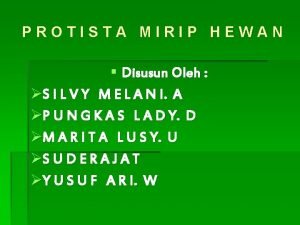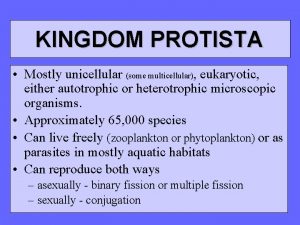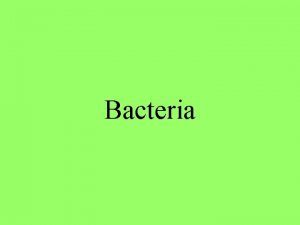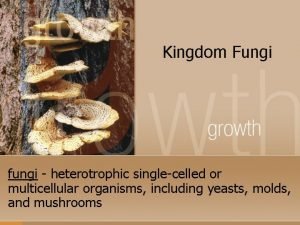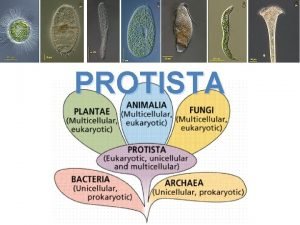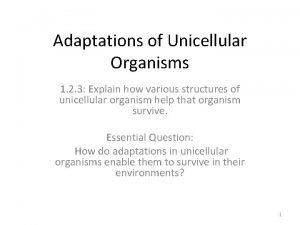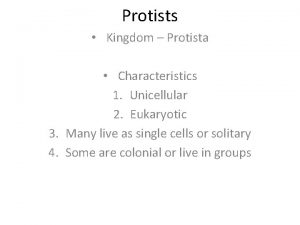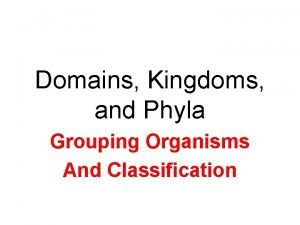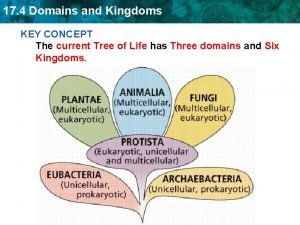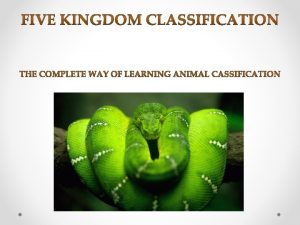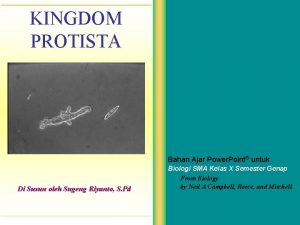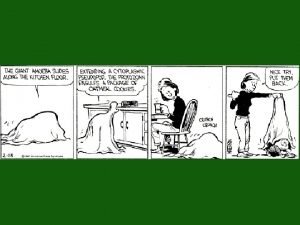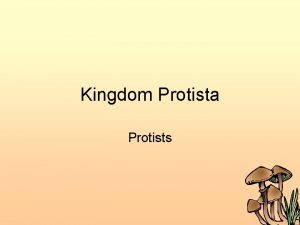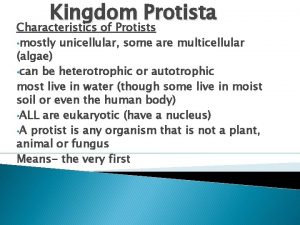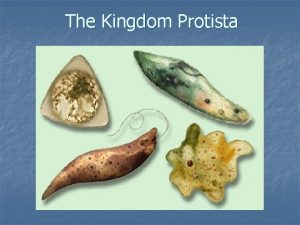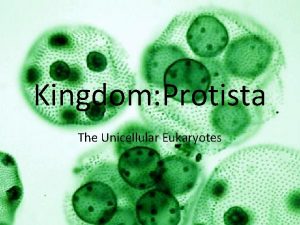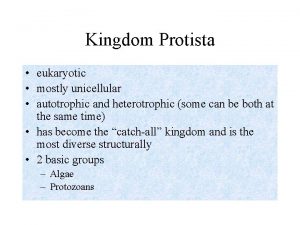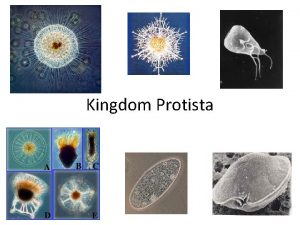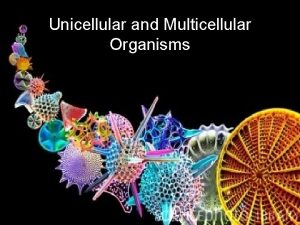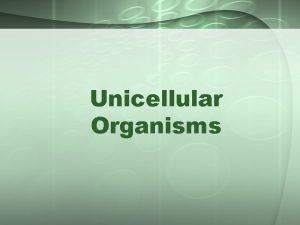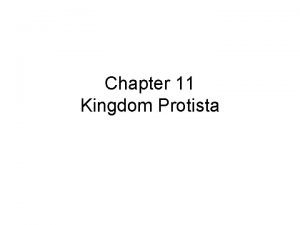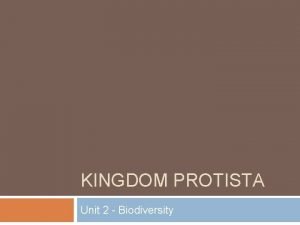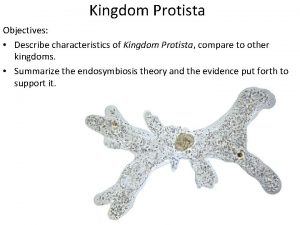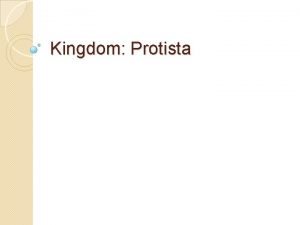Kingdom Protista Cell type microscopic mostly unicellular some


















- Slides: 18


Kingdom Protista Cell type: microscopic, mostly unicellular, some are multicellular (algae) • ALL are eukaryotic (have a nucleus) • Most live in water (though some live in moist soil or even the human body) A protist is any organism that is not a plant, animal or fungus

Nutrition: heterotrophic or autotrophic • They are classified into three major groups according to their type of nutrition 1) Protozoa (animal-like protists) are heterotrophs that ingest or absorb food.

2) Algae (plant-like protists) are autotrophs that carry out photosynthesis. 3) Slime moulds and Water moulds (fungus-like) are saprotrophic, which means they absorb nutrients

Body type: • They can be like plants - green, make their own food and NOT move around. • They can be like animals - have moving body parts and are able to move around their environments

• Reproduction: They can do Asexual or Sexual reproduction, depending on the situation. Asexual reproduction by mitosis, fission, budding, or spores

• Sexual reproduction – sperm and eggs join together to form a new protist. This happens in water.

1 parent splits into 2 identical cells 2 parents make Non-identical offspring

Locomotion: • There are 4 Phyla of Animal-like Protists - They are classified by how they move: 1. Zooflagellates – flagella 2. Sarcodines – extensions of cytoplasm (pseudopodia) 3. Ciliates – cilia 4. Sporozoans – do not move


Zooflagellates • move using one or two flagella absorb food across membrane

Sarcodines (Ameba) • moves using pseudopodia ( “false feet” ), which are like extensions of the cytoplasm

Ciliates (Ex: Paramecium) • move using cilia

Sporozoans • do not move on their own • They are parasitic • Malaria is caused by a sporozoan (Plasmodium), which infects the liver and blood; It is transmitted by mosquitoes.

Kingdom Protista Video: • http: //www. youtube. com/watch? v=zsd. YOg. Tb. Ok Amoeba Phylum Ciliophora Paramecium Phylum Chlorophyta (Green algae)

Example of a Protist Life Cycle (See Figure 5. 15, p. 146) • Plasmodium vivax (a human parasite) is responsible for one type of malaria in humans. 1. A mosquito bites an infected person and ingests red blood cells, which contain the protist. 2. Inside the mosquito’s stomach, the protist reproduces. It forms a zygote (baby) which eventually breaks open releasing the sporozoites (spores).

3. The sporozoites go to the mosquitoes mouth so they can infect a new human host if bitten. 4. Once inside the new human host, sporozoites will go to the liver and reproduce. 5. Once they multiply, they enter the blood and invade red blood cells causing them burst.

Malaria Animation (Life cycle of a Protist) • http: //www. youtube. com/watch? v=OEDhe 4 MPEMc
 Fungi vs protist
Fungi vs protist Kingdom protista multicellular unicellular
Kingdom protista multicellular unicellular Old kingdom middle kingdom new kingdom
Old kingdom middle kingdom new kingdom Nnn ruled
Nnn ruled Youtube egypt
Youtube egypt Mentohotep
Mentohotep Multicellular protista
Multicellular protista Unicellular prokaryotes kingdom
Unicellular prokaryotes kingdom Are fungi single celled or multicellular
Are fungi single celled or multicellular Kingdom fungi unicellular or multicellular
Kingdom fungi unicellular or multicellular Protista
Protista In unicellular organism
In unicellular organism Dinoflagellates characteristics
Dinoflagellates characteristics Protista kingdom
Protista kingdom Two examples of archaebacteria
Two examples of archaebacteria 3 domains and 4 kingdoms
3 domains and 4 kingdoms Classification of protista
Classification of protista Protista, fungi, plantae, animalia *
Protista, fungi, plantae, animalia * Kingdom protista ppt
Kingdom protista ppt

